Starting as a cotton mill in Rhode Island, New York, Fruit of the Loom began operations in 1851. Founders and brothers Robert and Benjamin Knight registered the Fruit of the Loom trademark 20 years later, making Fruit of the Loom one of the oldest brands in the world. This now famous logo was adopted as almost a coincidence. A friend of Robert Knight’s painted apples on the cloth, and the ones with the Fruit of the Loom style logo outsold the rest. The name Fruit of the Loom is a reference to the bible Psalm 127:3 “fruit of the womb”. They were also one of the first companies to offer an Unconditional Guarantee on all its products in 1891.
The strength of the brand grew over the next few decades, and by the late 1920s Fruit of the Loom was licencing out its logo and brand to other textile manufacturers as it was so valuable to them. Innovations that are taken for granted today helped propel sales, such as the introduction of the boxer multipack, which would become the industry standard for purchasing men’s underwear. Like many US textile companies during WWII, Fruit of the Loom changed their production to accommodate the war effort, manufacturing over 50 million pairs of boxer shorts for the US military. As the swinging 60s rolled around and consumer spending would start to rise, the company would start advertising on television, using celebrities like commentator Howard Cosell as brand ambassadors. Another notable moment in Fruit of the Loom’s marketing history is their 1988 ‘We Fit America’ underwear campaign, which was the first ever TV ad to feature a woman in underwear.
By the late 1980s, sales were at $2.5 billion, up from $500 million just 15 years earlier. Although revenue had increased by five times, the company still struggled to repay debts and competition from imported goods after the North American Free Trade Agreement (NAFTA) led to widespread downsizing in the following decade. In 1999 Fruit of the Loom declared bankruptcy after posting a loss of over half a billion dollars. In 2002, famous investor and philanthropist Warren Buffett bought the company for $835 million, and later adding Russell Athletic, Spalding and Vanity Fair to a portfolio of fashion brands.
Hilarious Fruit of the Loom Advert featuring “The Unbustables”
How to tell if Fruit of the Loom is vintage from the logo
Fruit of the Loom is one of the world’s largest textile manufacturers and create a massive range of clothing products, however most of us in the vintage community know them best for their printable blank vintage t-shirts. These t-shirts have been the base layer of some of the most iconic vintage t-shirts around, however the nature of them being blank means that its often hard to see an outwardly showing logo, so the best place to find one is often the neck tags. The logo contains a red apple, green grapes, purple raps, white currants, and yellow gooseberries but has been stylized in many different ways in the last 160 years.
1893 to 1927
- The first ever logo looks more like a painting than a logo, and is iconic for forming the structure of what would become the final logo
- It depicts an array of colourful fruit
- Fruit of the Loom is written in an arc across the top
- The text is capitalised
- It has a frame like border, adding to its appearance as a painting
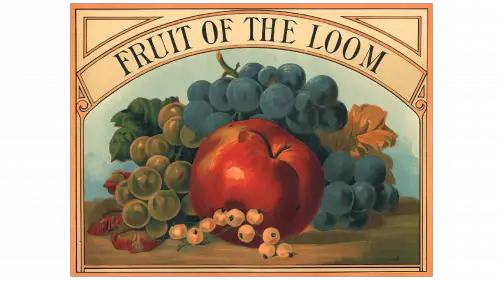
1893 to 1927 vintage Fruit of the Loom logo
1927 to 1936
- The inner design is still very much like a painting
- However, it is set in a badge like design
- The text is in an arc across the top but ‘of the’ if smaller and it doesn’t have a background
- A yellow border circles it
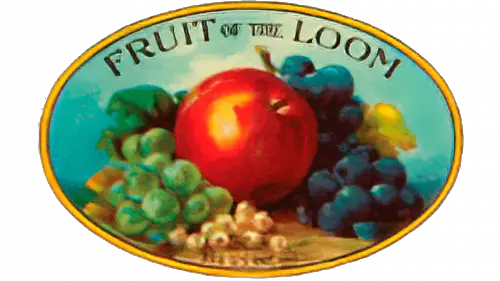
1927 to 1936 vintage Fruit of the Loom logo
1936 to 1951
- The logo became circular, and removed colour from the design
- It uses a slightly different style, but same array of fruits for the emblem
- The text has a scroll background, and remains capitalised
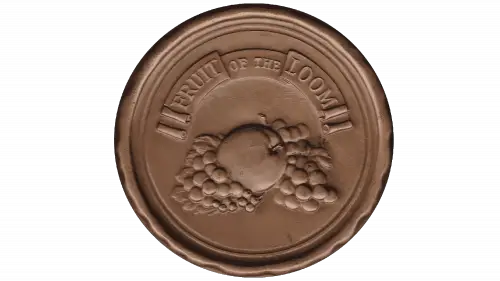
1936 to 1951 vintage Fruit of the Loom logo
1951 to 1962
- The design is the same as its predecessor
- But colour is added, with the badge becoming gold
- The text is black
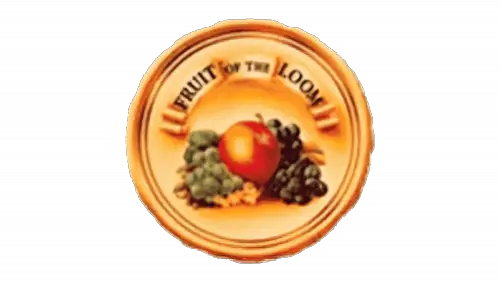
1951 to 1962 vintage Fruit of the Loom logo
1962 to 1978
- In 1962 a big update to the logo was made
- The emblem is set above the text
- The ‘F’ and ‘L’ are bigger than the other letters, with the ‘ruit’ and ‘oom’ being underlined
- It is an oval badge, with the emblem breaking the shape
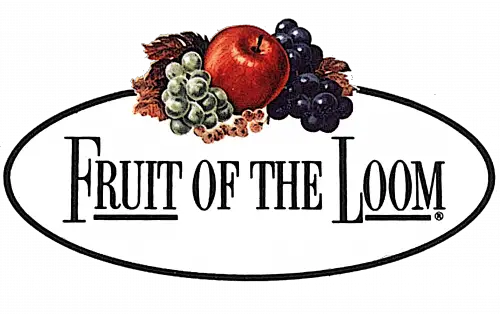
1962 to 1978 vintage Fruit of the Loom logo
1978 to 2003
- The structure of the logo remained the same
- However, this is the first example of the emblem becoming more abstract and less realistic
- The text is all the same size and no longer underlined
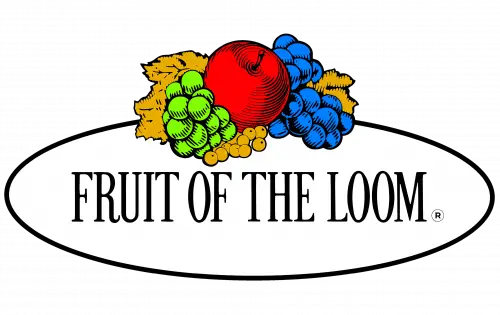
1978 to 2003 vintage Fruit of the Loom logo
2003 to now
- The most recent Fruit of the Loom logo has the emblem over the text but is no longer a badge
- The design of the fruit is slightly changed, but remains abstract
- The ‘of the’ is smaller and on top of each other in between the words ‘Fruit’ and ‘Loom’
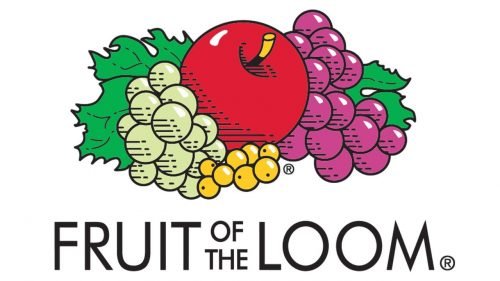
2003 to now Fruit of the Loom logo
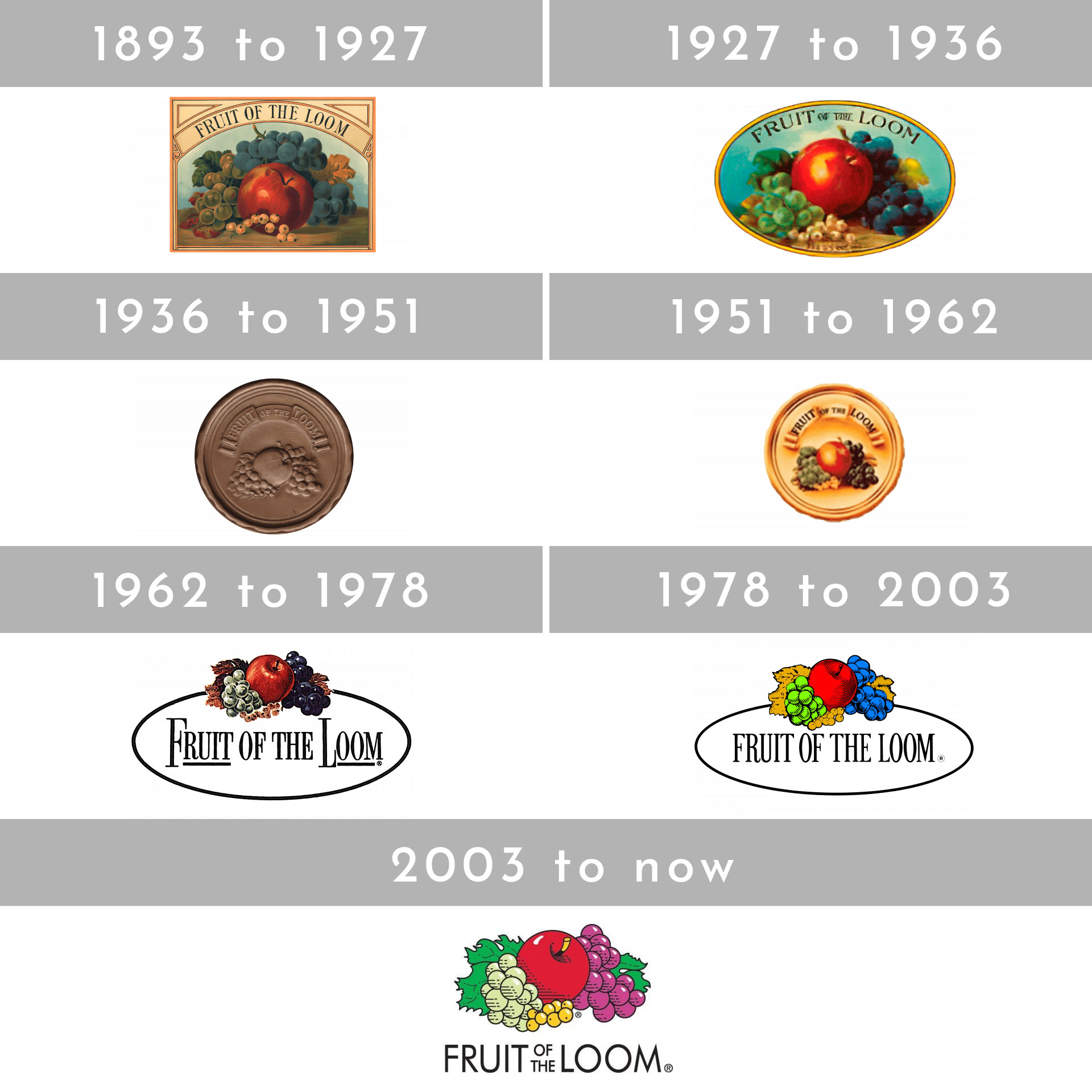
Vintage Fruit of the Loom logos through the years
How to tell if Fruit of the Loom is vintage from the neck tags
Although comparing the logos on the tags over the years can help us narrow down rough eras, in some cases the logo didn’t change for 25 years, so looking at Fruit of the Loom tags over the years can help us get a better approximation of when the piece is from. However as many of the best Fruit of the Loom t-shirts are old band ones with printed information where the tags might have begun to fade, making comparison difficult, here’s a few things to watch out for that might indicate if your Fruit of the Loom is vintage.
The first thing to look out for is if the top is single or double stitch. Single stitch is a stitching technique that shows as just a line, whereas double shows as two (as you can see in the example below). Single stitch methods stopped being used in the mid to late 1990s, so if your top uses single stitch, then it’s almost definitely vintage. The next clue is the country of manufacture. The company has more widely started manufacturing abroad since 2010, so if a piece was made outside of the USA, it is likely its modern. A last rule to apply is that tag from the 1990s onwards tended to have a lot more information on them and there would be two neck tags instead of one.
Need assistance identifying your vintage tags? Upload a picture on our vintage tag identification page, and we’ll take care of the rest!
1930s vintage Fruit of the Loom tags
- Tags this old are extremely rare to come across
- They will have the information sewn in

1930s Fruit of the Loom tags
1950s vintage Fruit of the Loom tags
- In the 1950s the tags included the logo on a white rectangle
- They started to include sizing, composition, and country of manufacture information
- Logos started to be printed on tags in the late 1950s, making it easier to use a more accurate version of the official company logo

1950s Fruit of the Loom tags
1960s vintage Fruit of the Loom tags
- The text of the logo would start to go below the emblem
- The sizing in both text and number would be at the top
- Product care information started to be included
- From this point on all the tags information was printed instead of sewn

1960s Fruit of the Loom tags
1970s vintage Fruit of the Loom tags
- The tags started to become more consistent in the 1970s
- It was very common for them to include care information amongst other details
- Sizing was still given in number and letter format

1970s Fruit of the Loom tags
1980s vintage Fruit of the Loom tags
- The late 1970s logo update started showing on tags
- The grapes are a noticeably more vibrant colour
- Some of the tags started to become polyester

1980s Fruit of the Loom tags
1990s vintage Fruit of the Loom tags
- Nearly all the tags became polyester, most of them white and including an additional tag behind them
- The additional tag contains a lot more information about product care, and sometimes is in multiple languages
- Number sizing stopped being used in favour of letter sizing
- An American flag is used at the bottom of some of them
- A version of the logo in a black frame was used in the second half of the 1990s
- They would have sizing in a black box on the tag underneath
- Offshore production in places like Honduras started to become more common, but would still use USA components

1990s Fruit of the Loom tags

1990s Fruit of the Loom tags
2000s vintage Fruit of the Loom tags
- The 2003 logo update can be seen on modern Fruit of the Loom pieces
- It is obvious as the ‘of the’ s squeezed between ‘Fruit’ and ‘Loom’
- They are large polyester squares

2000s Fruit of the Loom tags
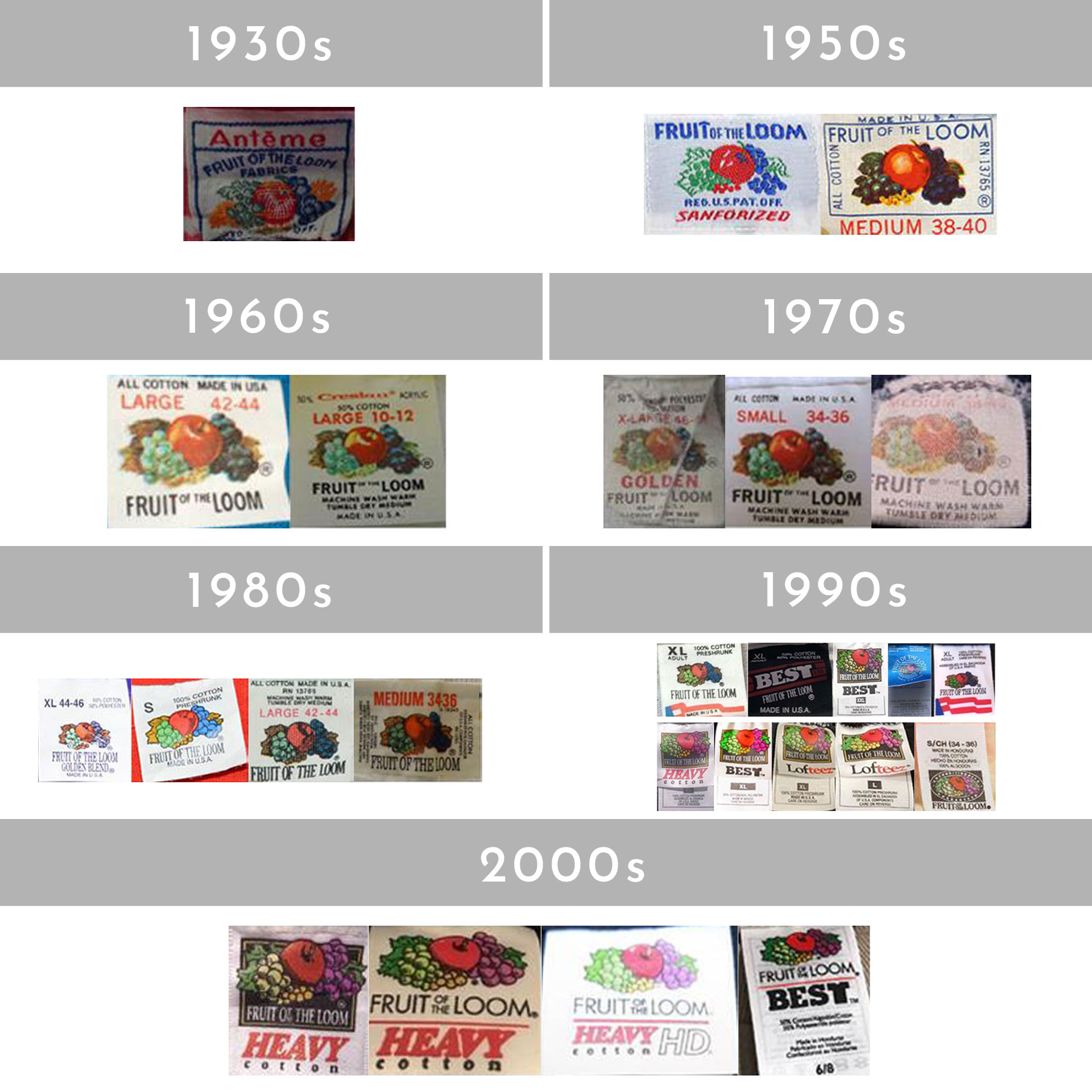
Vintage Fruit of the Loom tags through the years
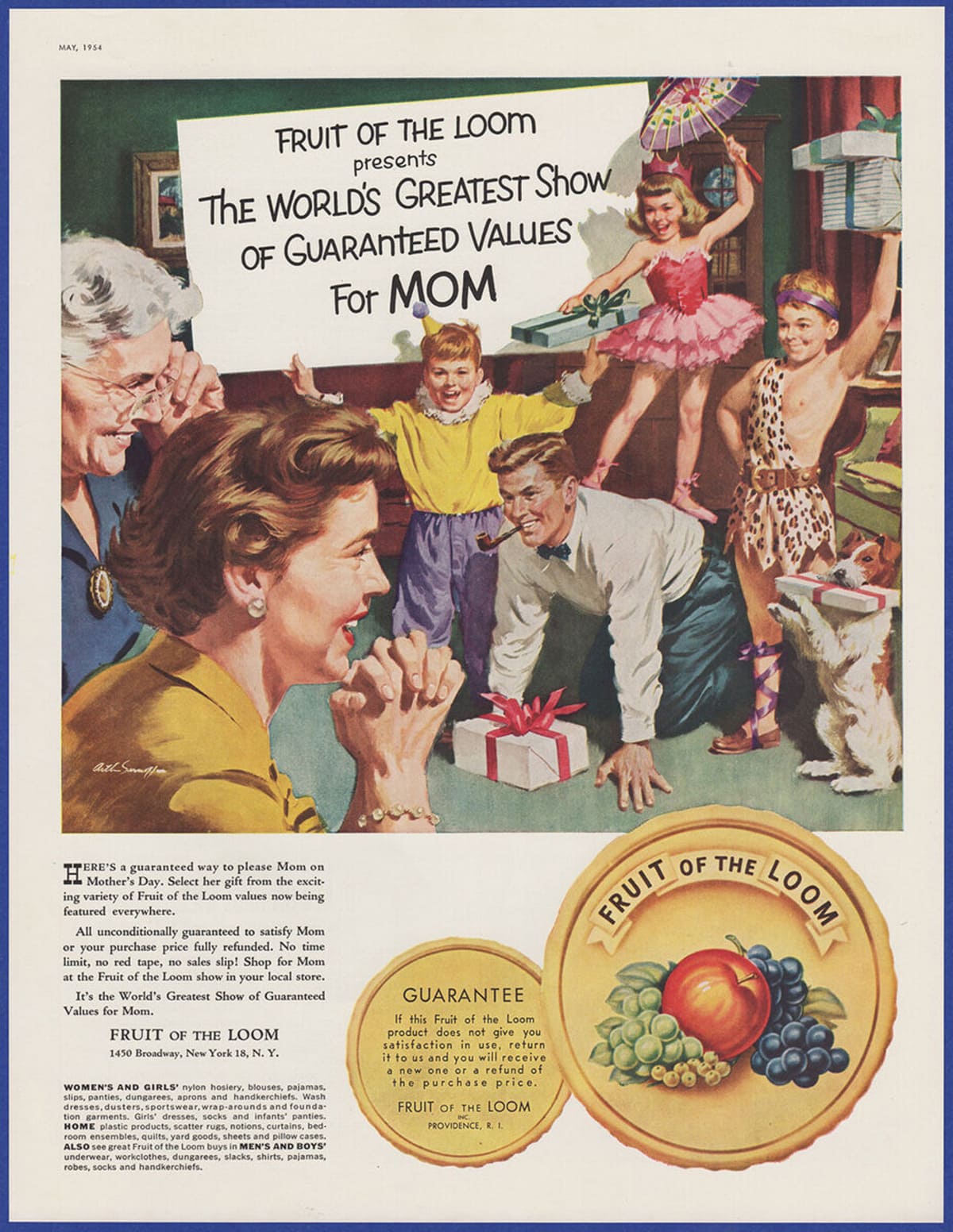




My brother recommended I might like this blog. He was totally right.
This post actually made my day. You cann’t imagine simply how much time I
had spent for this information! Thanks!
It’s impressive that you are getting thoughts from this piece of writing as well as from our argument made at this time. http://www.kayswell.com
Thank you for the auspicious writeup. It in fact was a amusement account it. Look advanced to far added agreeable from you! By the way, how could we communicate? http://www.kayswell.com
I used to be able to find good advice from your blog articles. http://www.kayswell.com
Hello there, You’ve done a great job. I will definitely digg it and personally recommend to my friends. I am confident they will be benefited from this website. http://www.kayswell.com
I’m curious to find out what blog system you have been using? I’m experiencing some small security issues with my latest blog and I’d like to find something more safe. Do you have any suggestions? http://www.kayswell.com
I’m curious to find out what blog system you have been using? I’m experiencing some small security issues with my latest blog and I’d like to find something more safe. Do you have any suggestions? http://www.kayswell.com
I’d like to thank you for the efforts you have put in writing this blog.I’m hoping to check out the same high-grade content from you later on as well. In truth, http://www.kayswell.com your creative writing abilities has motivated me to get my very own website now ?
Superb post however , I was wanting to know if you could write a litte more on this subject? I’d be very grateful if you could elaborate a little bit further. http://www.kayswell.com
Spot on with this write-up, I really believe this site needs much more attention. I’ll probably be returning to read through more, thanks for the info!
My partner and I stumbled over here coming from a different page and thought I might check things out. I like what I see so i am just following you. Look forward to finding out about your web page yet again. http://www.kayswell.com
Nice post. I study one thing more challenging on totally different blogs everyday. It should always be stimulating to learn content from different writers and follow just a little something from their store. I? desire to use some with the content on my blog whether you don? mind. Natually I?l provide you with a link on your web blog. Thanks for sharing.
Pretty great post. I just stumbled upon your weblog and wanted to say that I have really loved browsing your weblog posts. After all I’ll be subscribing on your feed and I hope you write once more very soon! http://www.hairstylesvip.com
Superb post however , I was wanting to know if you could write a litte more on this subject? I’d be very grateful if you could elaborate a little bit further. http://www.ifashionstyles.com
It’s a pity you don’t have a donate button! I’d definitely donate to this fantastic blog! I guess for now i’ll settle for bookmarking and adding your RSS feed to my Google account. I look forward to new updates and will share this blog with my Facebook group. Talk soon! http://www.kayswell.com
Hi every one, here every person is sharing these kinds of knowledge, therefore it’s good to read this blog, and I used to pay a quick visit this blog daily. http://www.kayswell.com
Hi there, its fastidious article concerning media print, we all be aware of media is a great source of data. http://www.kayswell.com
What’s up, after reading this awesome post i am too happy to share my familiarity here with colleagues. http://www.kayswell.com
It’s amazing to pay a visit this site and reading the views of all friends regarding this paragraph, while I am also keen of getting know-how. http://www.kayswell.com
It’s impressive that you are getting thoughts from this piece of writing as well as from our argument made at this time. http://www.kayswell.com
Your mode of explaining everything in this piece of writing is genuinely pleasant, every one be capable of simply be aware of it, Thanks a lot. http://www.kayswell.com
What’s up i am kavin, its my first time to commenting anywhere, when i read this paragraph i thought i could also make comment due to this sensible post. http://www.kayswell.com
Really when someone doesn’t be aware of afterward its up to other viewers that they will help, so here it occurs. http://www.kayswell.com
Hello, i read your blog occasionally and i own a similar one and i was just curious if you get a lot of spam feedback? If so how do you stop it, any plugin or anything you can recommend? I get so much lately it’s driving me insane so any help is very much appreciated. http://www.kayswell.com
It’s in point of fact a great and useful piece of info.I am glad that you just shared this useful info with us.Please keep us informed like this. Thanks for sharing. http://www.kayswell.com
constantly i used to read smaller articles or reviews that also clear their motive,and that is also happening with this piece of writing which I am reading here. http://www.kayswell.com
Thanks for one’s marvelous posting! I truly enjoyed reading it, you are a great author.I will ensure that I bookmark your blog and will often come back in the future. http://www.hairstylesvip.com I want to encourage you to definitely continue your great posts, have a nice day!
Hi, Neat post. There’s an issue together with your site in internet explorer, could test this? IE still is the market leader and a large section of other folks will miss your great writing due to this problem. http://www.ifashionstyles.com
There are actually quite a lot of details like that to take into consideration. That could be a nice level to deliver up. I offer the thoughts above as basic inspiration but clearly there are questions just like the one you carry up where an important factor will likely be working in trustworthy good faith. I don?t know if finest practices have emerged around things like that, but I’m positive that your job is clearly identified as a good game. Both boys and girls really feel the influence of just a moment? pleasure, for the remainder of their lives.
Hi, Neat post. There is a problem with your site in web explorer, might test this? IE still is the market chief and a large component of other people will leave out your wonderful writing because of this problem. http://www.kayswell.com